Structural biology of neurotransmitter-and voltage-gated ion-channels
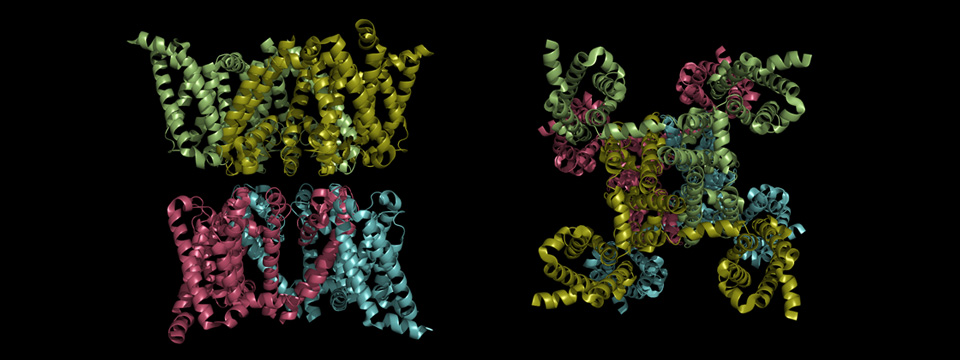 iGluR Structures
iGluR Structures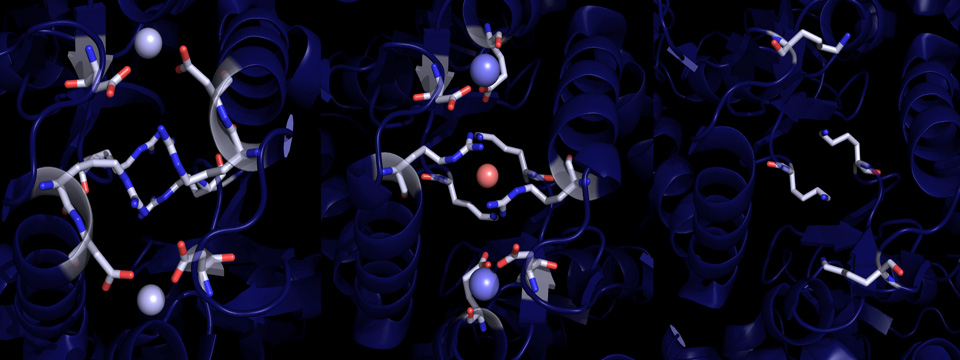 GABA Receptor Structure
GABA Receptor Structure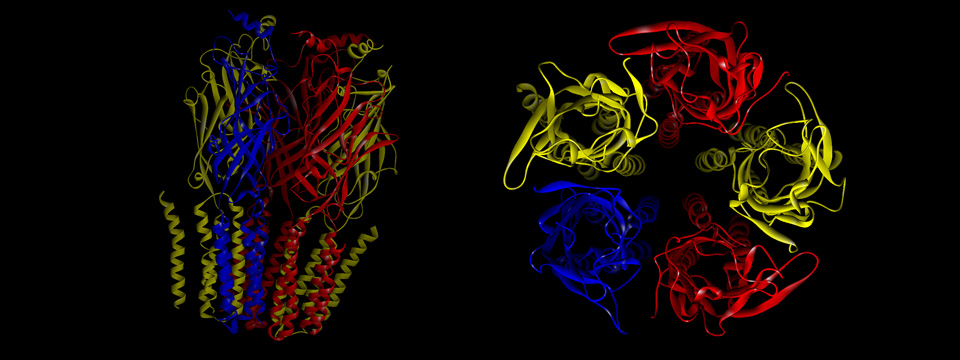 iGluR Single Channels
iGluR Single Channels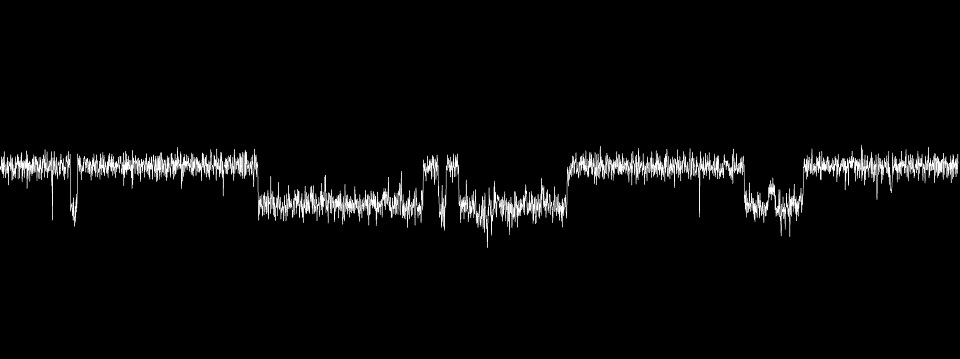 Sodium Currents
Sodium Currents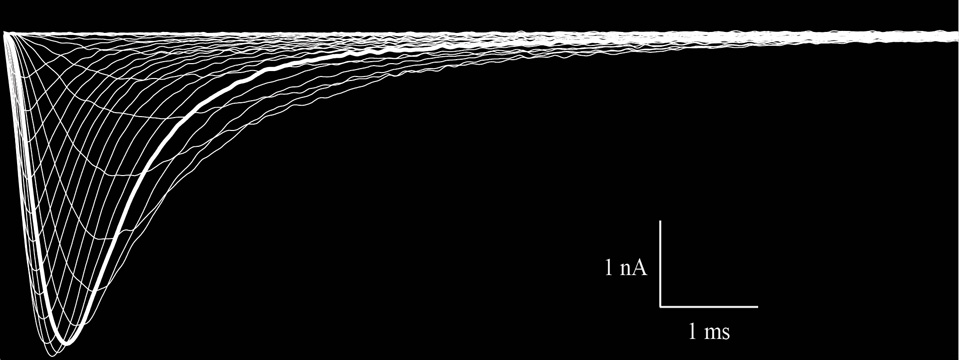 Single Channel iGluRs
Single Channel iGluRs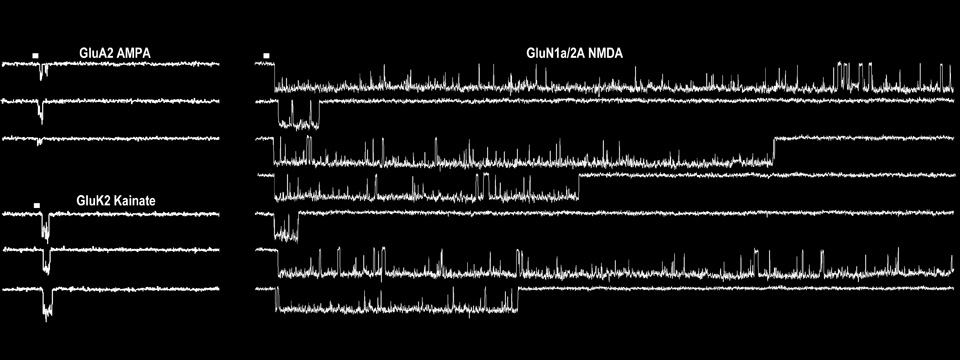 AMPAR Signaling Complex
AMPAR Signaling Complex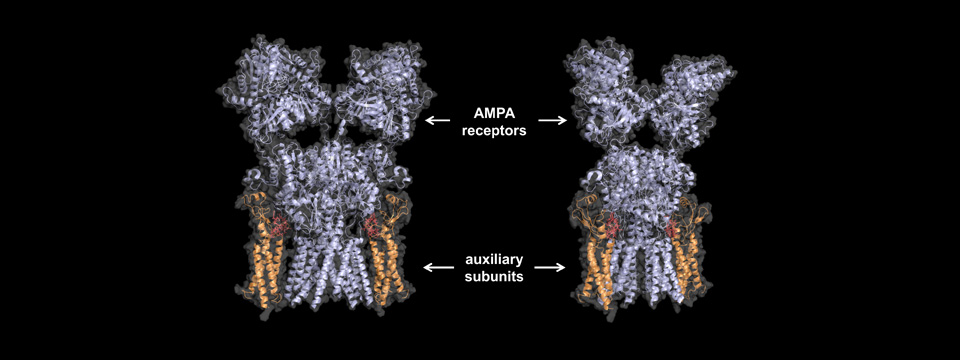
Fast communication in the brain is mediated by an extended family of plasma membrane bound ion-channels that are activated by either neurotransmitter binding or changes in membrane potential. Our lab studies two major classes of neurotransmitter-gated ion-channels that dominate chemical signalling in the brain, namely excitatory ionotropic glutamate receptors (iGluRs) and inhibitory GABAA receptors (GABARs) as well as voltage-gated sodium channels (Na+ channels) that are responsible for rapid electrical signalling. We study all three ion-channel families primarily using patch-clamp electrophysiology to understand their functional properties. This work is complemented with fluorescence imaging and molecular biology approaches. We also collaborate with structural and computational biochemistry labs to understand how these ion-channels operate at atomic resolution. In recent years, the lab has focused on identifying how pore-forming and auxiliary subunits affect the functional behavior of the ion-channel signalling complex. Amongst other things, this work led to the discovery of ion-dependent gating of iGluRs that has motivated our understanding of why different iGluR subtypes have distinct functional properties and how they may have emerged during evolution.
Relevant Publications
Dawe, Musgaard, Aurousseau et al., 2016, Neuron (PDF, press release)
Dawe, Musgaard et al., 2013, Nature Structural & Molecular Biology (PDF, press release)
McGuire, Aurousseau et al., 2012, Journal of Biological Chemistry (PDF, Faculty1000)
MacLean & Bowie, 2011, Journal of Physiology (PDF, Editorial)